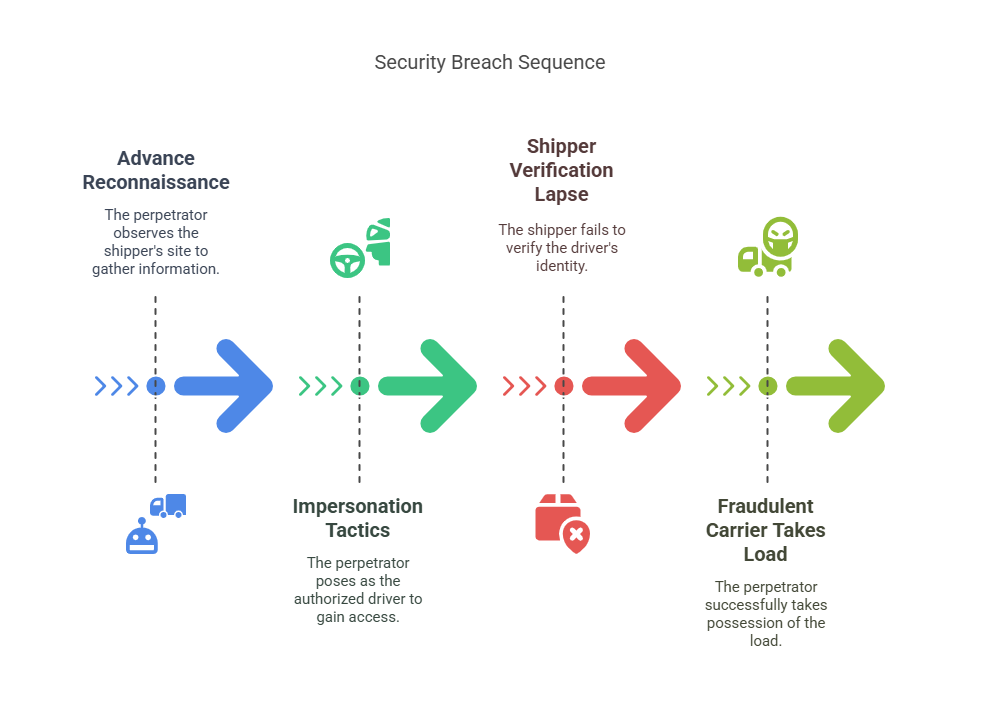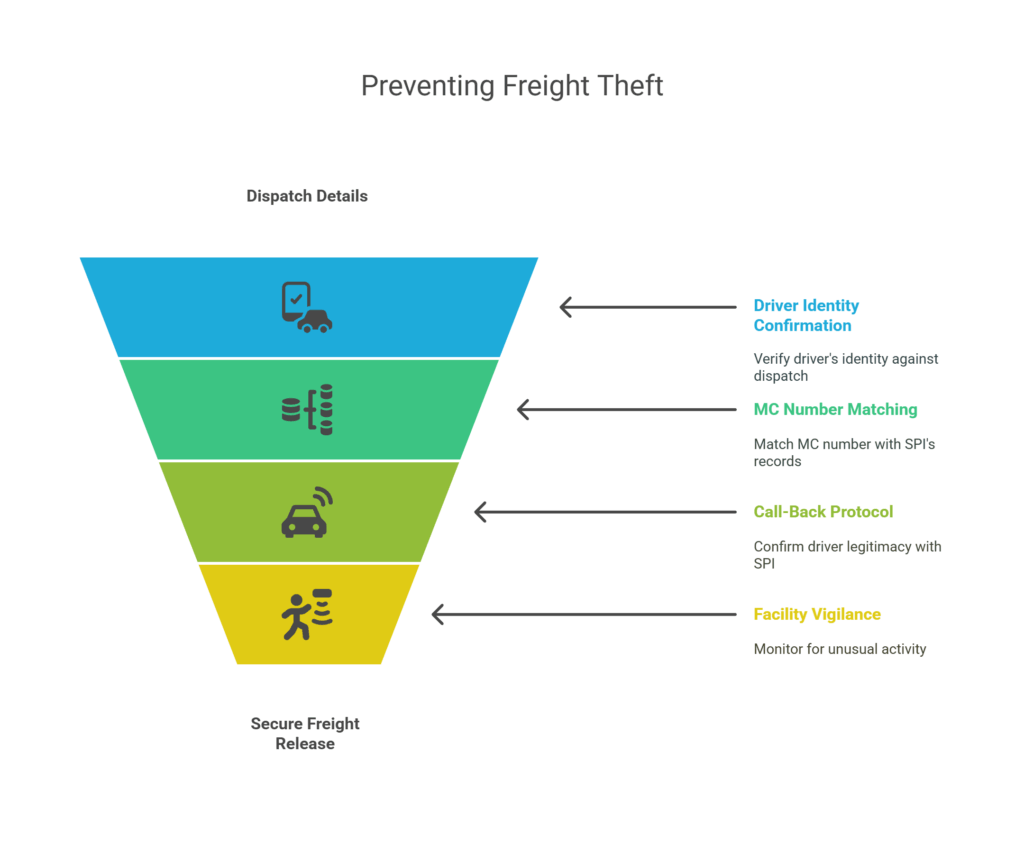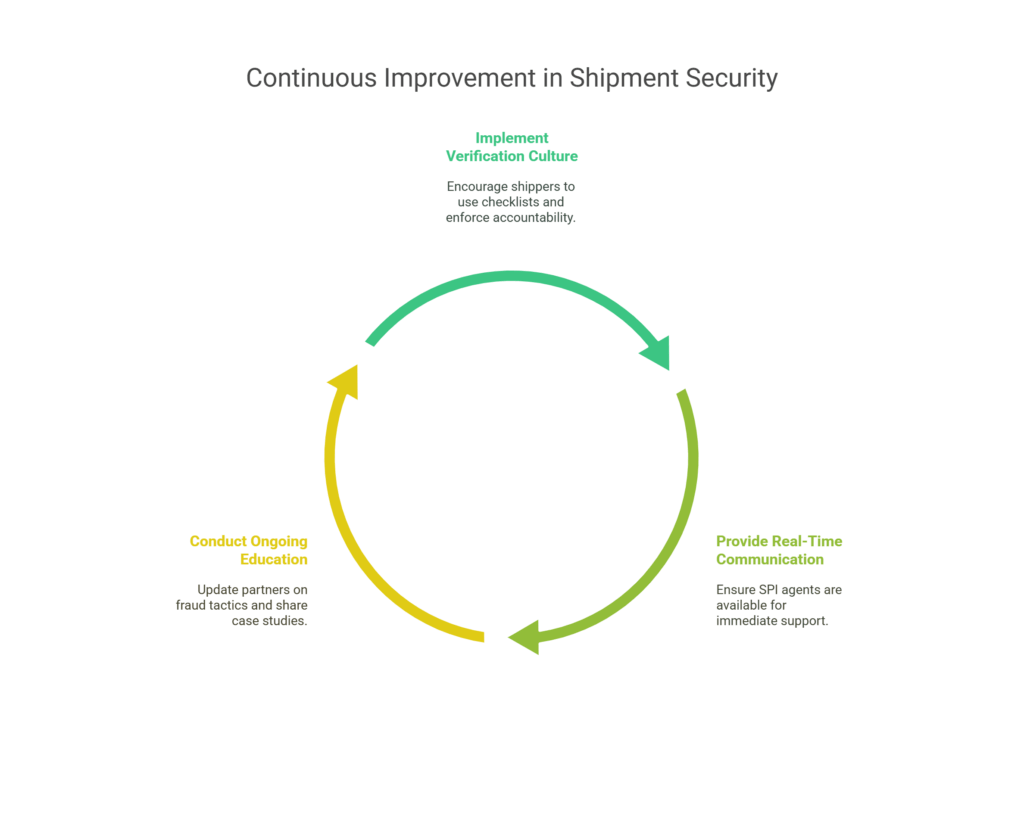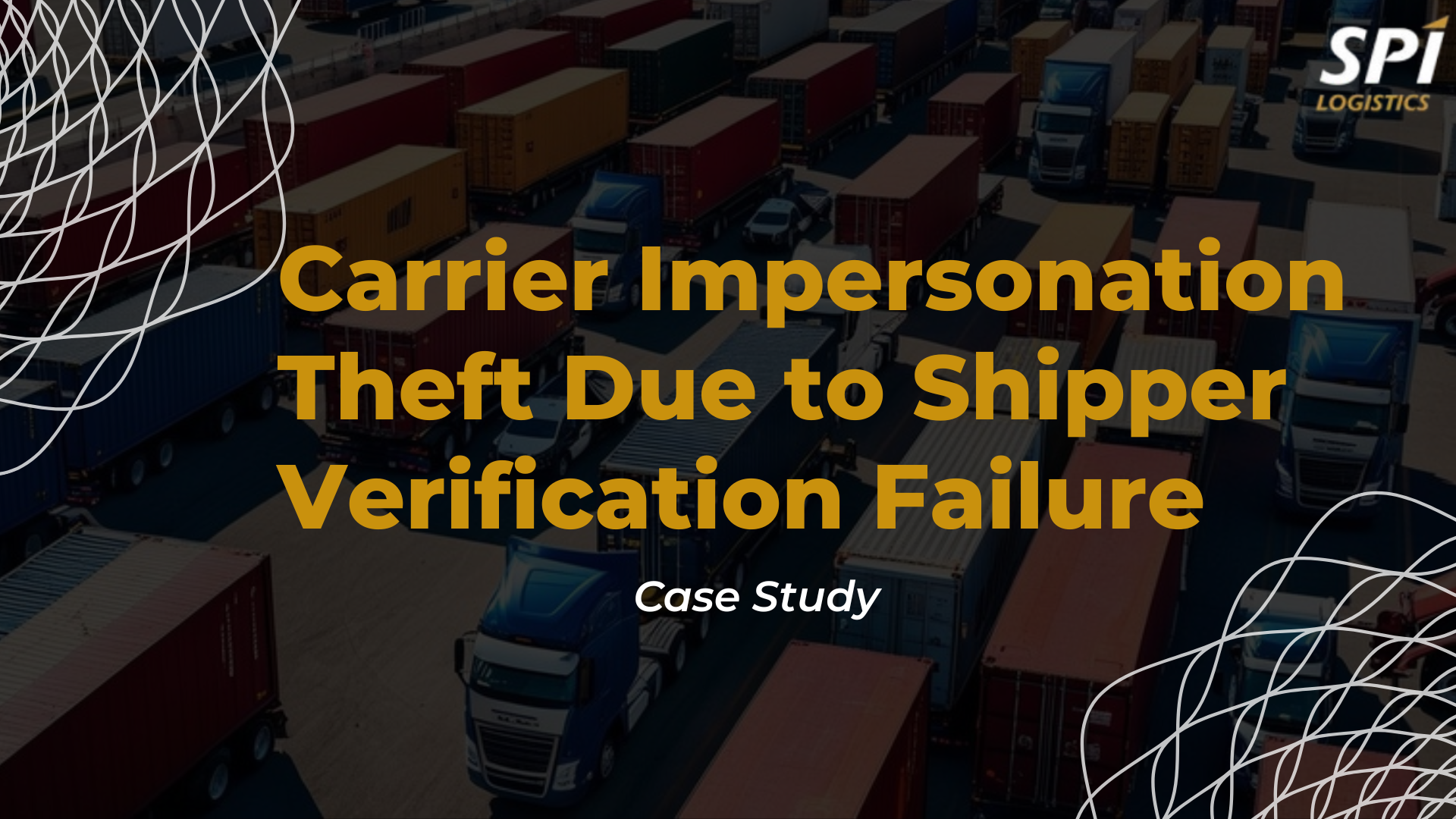1. What Happened
A recent cargo theft occurred when a shipper released a shipment to a fraudulent carrier who impersonated the legitimate transportation provider. Despite being given all critical information by SPI Logistics, including the carrier company name, driver’s full name, driver’s phone number, and the MC number, the shipper failed to verify these details at the time of pickup.
This lapse in standard protocol resulted in a successful theft of cargo. Initial assessments suggest that the theft was not opportunistic but rather a calculated and strategic operation.
2. How It Happened
This incident appears to have been a targeted operation by a bad actor familiar with the shipper’s routines and facility layout,
- Advance Reconnaissance: It is suspected that the perpetrator had been observing the shipper’s site over time, gaining insight into the daily operations, frequent driver interactions, and types of trucks commonly seen on-site.
- Impersonation Tactics: The thief likely posed as the authorized driver, mimicking expected arrival timing and possibly utilizing similar vehicle markings to further lower suspicion.
- Shipper Verification Lapse: The core failure was the shipper’s lack of verification of the driver’s identity. They did not cross-check the provided driver name, phone number, company, and MC number with the individual who arrived for pickup. This single misstep allowed the fraudulent carrier to take possession of the load.

This incident is an example of how strategic surveillance combined with simple human error can lead to serious security breaches in freight logistics.
3. What Could Have Been Done to Prevent It
Had the shipper followed SPI’s recommended verification protocols, this theft could likely have been prevented. Key preventative steps include:
- Driver Identity Confirmation: Always confirm the name, phone number, and company of the arriving driver against the dispatch details provided by SPI. Even if the truck or trailer looks familiar, verification must occur for every pickup.
- MC Number Matching: Request the MC number from the driver and ensure it matches what SPI has on file. This is one of the easiest and most effective ways to prevent impersonation.
- Call-Back Protocol: When in doubt, shippers should call SPI directly before releasing freight to confirm the legitimacy of the arriving driver, especially if there are discrepancies or if the driver arrives unannounced or ahead of schedule.
- Facility Vigilance: Facilities should remain aware of unusual activity, including unfamiliar individuals loitering or repeated attempts to gather information about shipping procedures.

4. How SPI Prevents These Issues
At SPI Logistics, we proactively provide complete and accurate information to all shippers and customers to enable secure load handoffs. When these protocols are followed, they work. In fact, there have been multiple recent instances where vigilant shippers caught discrepancies, such as mismatched MC numbers or unfamiliar driver names, and contacted SPI to verify details. In each case, our team was able to confirm the correct carrier identity and prevent theft by turning away the fraudulent driver.
SPI also supports our partners through,
- Strict Verification Culture: We continuously reinforce the importance of verifying all shipment handoff details. Shippers are encouraged to implement checklists and enforce accountability among dock staff.
- Real-Time Communication: SPI agents are available in real time to confirm or clarify any pickup information.
- Ongoing Education: We regularly update our partners on emerging fraud tactics and share case studies like this one to ensure awareness remains high across the network.

Key Lesson:
Even with all the right information in hand, a single missed step, such as failing to verify the driver’s identity, can result in catastrophic loss. Cargo theft is becoming more strategic and professionalized. Facilities and shippers must remain vigilant and treat verification not as optional, but as essential.




